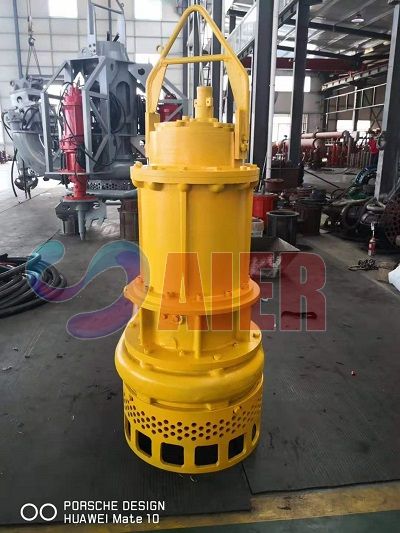Mar . 22, 2024 09:44 Back to list
sump pump-How to Choose a Slurry Pump 101
How to Choose a Slurry Pump 101
The purpose of this article is to provide an understanding of the important considerations for selecting a slurry pump for your application. There are many factors and considerations to ensuring the pump that your purchase is appropriately suited for your application needs. Proper pump sizing, motor power, performance requirements, slurry characteristics, and discharge head requirements are only a few of the things that must be factored into the slurry pump selection process.
What is a Slurry Pump?
There are many different types of pumps available, and most pumps are designed for a specific purpose or type of application. Pumps that are designed to transfer thin fluids are different from pumps that are designed for thick, solid-laden, abrasive, heavy materials. Due to the difference in pump design between different types of pumps, it is very important that the most appropriate pump be selected for your slurry application.
Slurry pumps are designed for pumping thick materials that can consist of such things as slurries, sand, gravel, mud, crushed rock, muck, manure, and many other highly viscous materials. Typically, a slurry is a mixture of a given material such as crushed rock and water. A slurry pump has the ability to move difficult thick material from the material source, into and through the pump, and downstream to its final destination.
Slurry pumps are inherently rugged by the nature of what they do and are capable of pumping high viscous and high specific gravity solid-laden slurries without clogging. The non-clogging aspect of a slurry pump design is one of the most critical differentiating factors compared to other pump types. These pumps perform in some of the harshest environments a pump could be applied to and are used in many industries including dredging, oil & gas, mining, frac sand pumping, and many other industries.
How to Choose a Slurry Pump
The following list of 8 significant considerations is to help you understand your pump application necessities in relation to selecting the best-suited pump for your application. The greater the viscosity, specific gravity, abrasion, and other important fluid and non-fluid characteristics make selecting a pump more difficult because these factors play into the situation at a greater level of importance, making the following application specifics even more critical.
Critical – Know Your Application!
- Type of material will be pumped (sand, sludge, mud, muck, slurry, etc.). Knowing the characteristics of the material is critical for choosing the most suited slurry pump.
- Density of material to be pumped (specific gravity – 2.5 Sg, etc.)
- Viscosity of material to be pumped (1,000 centipoise (CPS), etc.).
- Operating temperature of material.
- The pH level – pH is a measure of hydrogen-ion concentration. An easy way to remember pH is that a pH of 7 is neutral, below 7 acid, and above 7 alkaline. High chrome steel is well suited for pH levels between 4 and 9. Duplex stainless steel is ideally suited for pH levels less than 3 and above 10.
-
ZJQ Submersible Slurry Pumps

- Flow rate required (example: 500 GPM or 100 cu. yards per hour [cu-yd/h]).
- Discharge Head (example: 100 PSIG).
- The pump chosen must be able to surpass the total discharge head for the application. This helps to reduce the potential abrasion to the pump and discharge pipeline.
- Length of inlet and discharge pipeline (example: 1,000-ft.).
- Diameter of inlet and discharge pipeline (example: 4-in., 10-in., 12-in., etc.).
- Pipeline material of construction (example: steel, polyvinyl chloride, cast iron, etc.).
- Pump elevation in relation to fluid source.
- Flooded suction (pump positioned below fluid source).
- Submersible suction (pump positioned within fluid source).
- Elevated suction (pump positioned above fluid source, the pump must be self-priming).
Match the Best Suited Pump to Your Application Requirements
- Pump size must effectively produce a greater flow rate than the critical flow rate of the pump.
- Critical flow rate is important when pumping slurries with a concentration of solids. The critical flow rate is the flow rate required to keep the material being pumped from settling on the bottom of the volute. Due to this, the actual flow rate should always be higher than the critical flow rate.
- Pump’s material of construction (cast iron, stainless steel, high chrome steel, etc.)
- The chemical compatibility of the pump must be suitable for the material that is to be pumped. Also, choosing a material that withstands abrasion is very important. Replaceable rubber liners are available that can be installed internally to the pump to assist with reducing abrasion to the inside of the metallic volute casing.
- Motor requirements (example: 250 HP).
- The power rating of the motor must be higher than the power consumption required. Flow rate, specific gravity, and discharge head are used to determine power consumption.
- Consider the economic impact to your profits of having a pump that is capable of producing the desired flow volume, but do it for a lot less cost. Usually, pumps that can move viscous materials with a very low amount of water can save a large amount of money over a short period of time due to reducing the accruing water volume used.
-
Wholesale Casting Dredge Pump Part - High Quality China Manufacturers & Suppliers
NewsJul.04,2025
-
High Quality Slurry Pump Seals Reliable China Suppliers & Manufacturers
NewsJun.24,2025
-
High Quality Portable Submersible Slurry Pump Supplier & Manufacturer from China
NewsJun.10,2025
-
Slurry Pump Parts Manufacturer – High Quality Rubber Spare Parts from China
NewsJun.10,2025
-
High Quality 1/3 HP Submersible Sump Pump with Vertical - Reliable Supplier & Factory Price
NewsJun.10,2025
-
High-Efficiency Centrifugal Slurry Pumps India
NewsJun.10,2025


